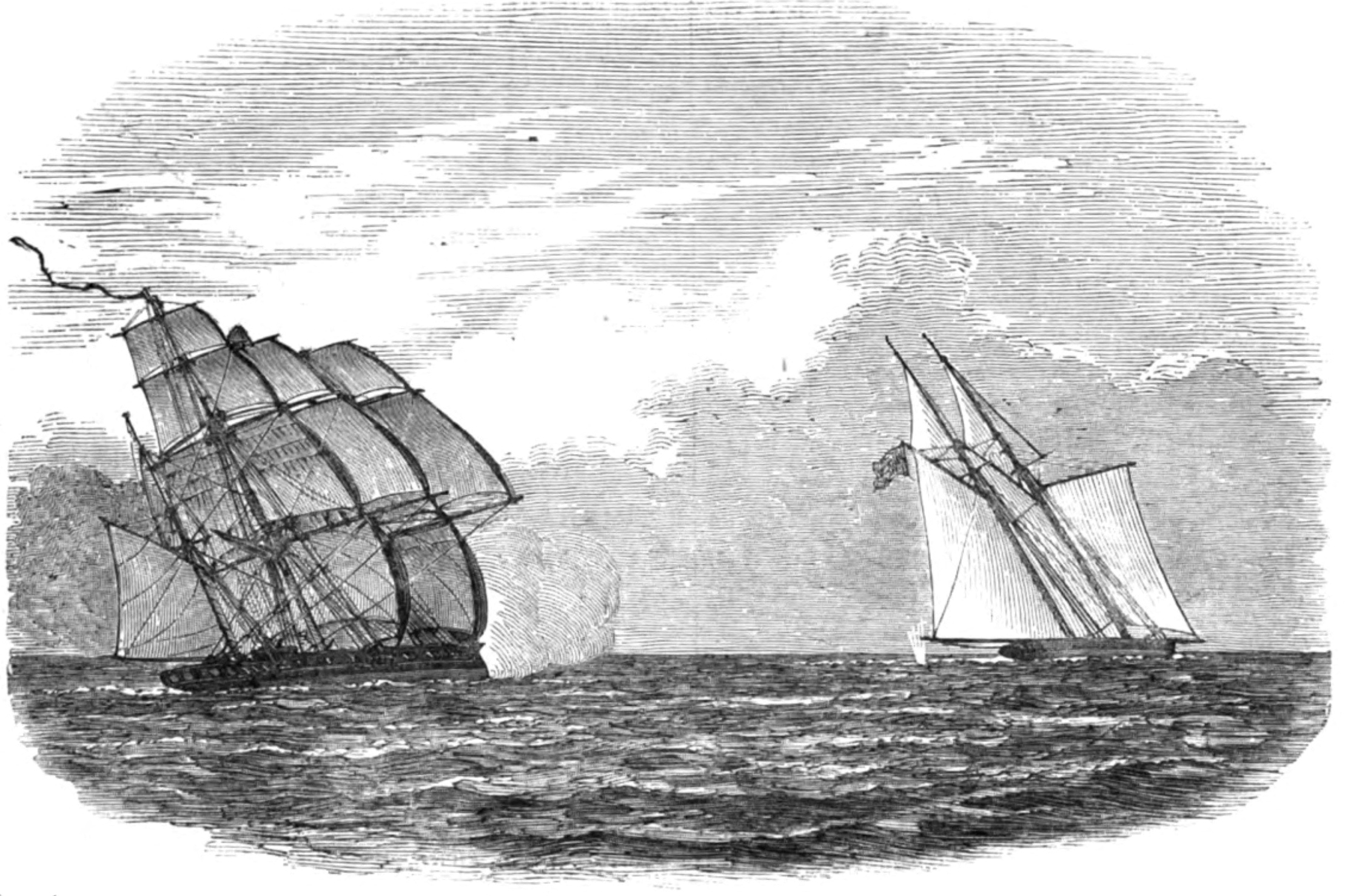[The following illustration and text appeared in the December 1849 Illustrated London News. Using ABBYY FineReader software, I have produced the text from the page images in the Internet Archive's web version of the original volume in the University of Michigan Library. Thanks to both of them! — George P. Landow]
Disapproving of the slave trade was one thing; actively campaigning for its abolition was something different, while the passing and implementing of laws providing for its termination was something else again. People could have gone on disapproving of the slave trade for ever. What changed the situation was the awakening of the Evangelical conscience. — Howard Temperley, “March of the Saints,” TLS (17 August 2007): 8.

Capture of a Brazilian Slaver by H. M. S. “Rattler” off Lagos [Nigeria]. [Click on image to enlarge it.]
Through the kindness of a friend, I am enabled to transmit the accompanying Sketch of the Rattler in pursuit of the notorious piratical slave schooner, Andorinha, on the western coast of Africa. As a brief account of the chase, capture, and previous history of this remarkable vessel may not prove uninteresting to your readers, I subjoin a few particulars.
At five o’clock on the morning of the 5th of August, a strange and suspicious-looking vessel was descried from the mast-head of the Rattler, which, upon being earefully scrutinized, was pronounced to be a large fore-and-aft schooner, under easy sail. Orders were immediately issued to get up the steam, make all sail, give chase, etc. Scarcely, however, had a part of the orders been complied with, than the movement was observed by the stranger, and the example promptly followed. An animated contest ensued, the crews of both, doubtless, being influenced by very different feelings. The breeze now freshened, and thereby considerably favoured the pretensions of the slaver. Notwithstanding, we gained upon her, but almost imperceptibly.
About two o’clock we were nearly within gun-shot of her, when — alas I how uncertain are the things of this life! — a dense mist set in, which obscured the whole horizon, and rendered her for a time invisible. Before the lapse of many minutes, however, she was again sighted by the officer of the watch; and as we had by this time gained so much upon her as to bring her within the range of our guns, we discharged three rounds from a sixty-eight pounder, the last of which, having fallen in rather dangerous proximity to her stem, caused her to heave to, after a most Interesting and exciting chase of nine hours’ dnuration.
Thus terminated the sareer of a vessel whose success is without a parallel in the annals of this revolting traffic. In the early part of the chase, and when the issue of the struggle appeared doubtful, she cast adrift her only boat, unshackled her cable, which she let go with her anchor, and had recourse to every other measure which was in the slightest degree calculated to increase her buoyancy and facilitate her escape. Sixty stand of musketry and several cutlasses were thrown overboard likewise, which circumstance tends to the supposition that the crew was well prepared, ay, and determined, too, to resist the attack of a less formidable opponent than the Rattler. This vessel was manned by a motley crew, consisting of 39 cut-throat looking fellows, exclusive of her commander, who was a Brazilian of note, and a Spaniard of distinction, nominally as a passenger.
It was subsequently ascertained that this large American-built schooner, which exceeded 300 tons burden, had made eleven successful trips, and had treble that number of escapes. She had been chased from time to time by most of the English and other cruisers stationed in the Bight of Benin, including some of our fastest calling-vessels, and a few steamers, whose pretensions she did not appear disposed to recognise. This, it appears, was to hare been her last voyage; and, in the event of her escaping, the proprietors contemplated erecting her into a model for their future guidance in architecture.
Related Material
“Gallant capture of a Slaver by ‘H.M.S Rattler.’” Illustrated London News (29 December 1849): 440. Internet Archive web version of the original volume in the University of Michigan Library. Web. 2 December 2015.
Last modified 1 June 2014